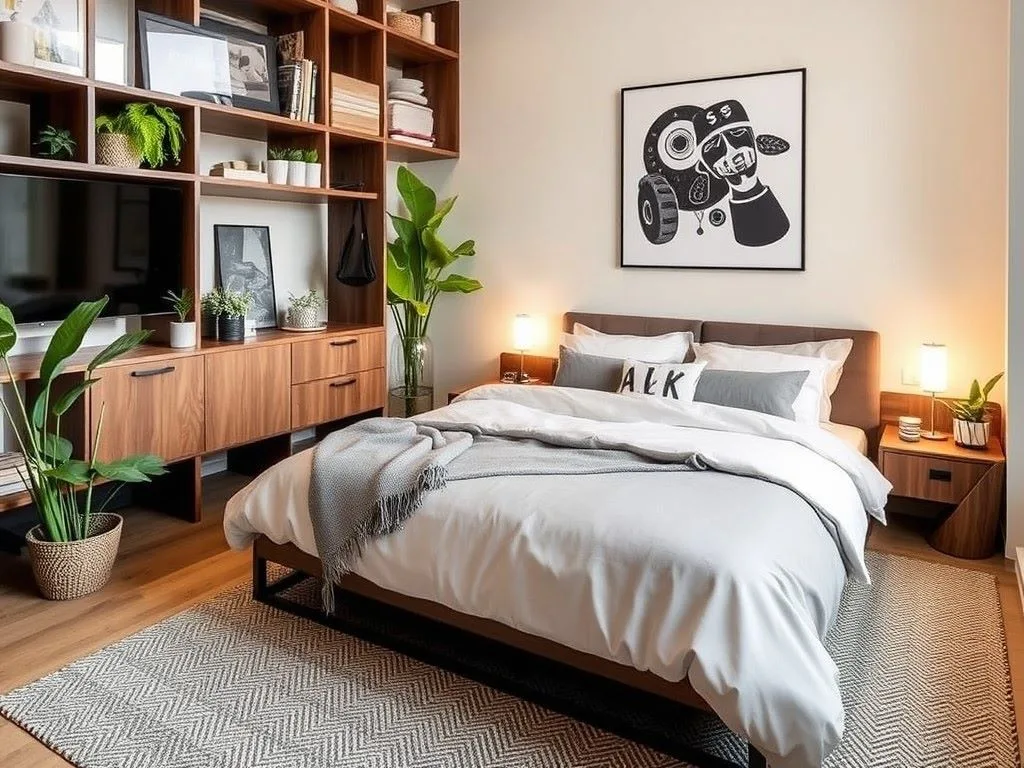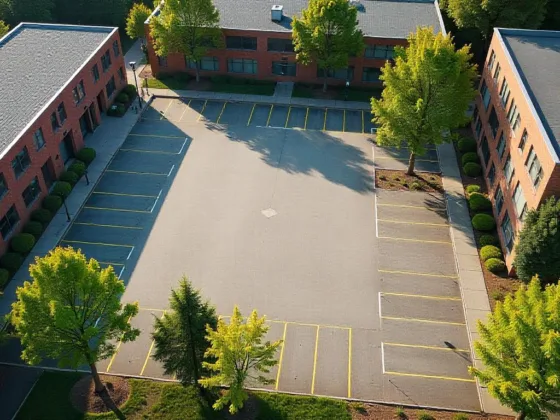Table of Contents Show
It’s important to recognize how economical apartments can play a significant role in promoting a sustainable lifestyle. By living in a smaller, more affordable space, you not only reduce your carbon footprint but also encourage a simpler way of life. These apartments often incorporate energy-efficient designs, making it easier for you to lower utility costs while minimizing resource consumption.
Moreover, their typically central locations allow for easier access to public transportation and local amenities, helping you to cut down on vehicle emissions and embrace a more eco-conscious lifestyle.
Key Takeaways:
- Reduced Consumption: Economical apartments promote a lifestyle that encourages minimalism, leading to less waste and lower resource consumption, fostering sustainable living practices.
- Energy Efficiency: Many affordable housing options are designed with energy-efficient features, which help reduce energy bills and lower the overall carbon footprint of residents.
- Community Focus: Affordable housing often creates a sense of community engagement, allowing residents to collaborate on sustainable initiatives, such as community gardens or recycling programs.
The Concept of Economical Apartments
Your living space can greatly impact your lifestyle choices. The concept of economical apartments revolves around affordable housing options that do not compromise on quality or sustainability. These spaces are designed to meet the needs of individuals and families who seek financial efficiency while promoting a lifestyle that embraces eco-friendliness and community engagement.
Definition and Features
Definition: Economical apartments are budget-friendly housing units that typically feature compact layouts and modern amenities, aimed at maximizing space and minimizing living costs. These apartments often incorporate energy-efficient systems, sustainable materials, and access to public transportation, fostering a reduced carbon footprint and an enhanced quality of life.
Benefits of Economical Living Spaces
Apartments designed for economical living offer numerous advantages that contribute positively to your lifestyle. By reducing overall expenses, they allow you to allocate resources toward experiences, savings, and sustainable practices. Additionally, these spaces often promote community engagement through shared amenities, and environmental awareness via energy-efficient systems, and encourage a smaller ecological footprint.
Living in economical apartments can significantly improve your day-to-day life. With lower housing costs, you can invest more in sustainable choices, such as organic food or eco-friendly products. These apartments often come equipped with energy-saving appliances and efficient insulation, which lowers utility bills and your overall environmental impact.
By fostering a sense of community among residents, you engage in shared initiatives, like gardening or recycling, promoting a collaborative atmosphere that nurtures both social ties and personal growth.
- Reduced living costs promote financial sustainability for residents.
- Smaller spaces encourage minimalism and decluttering lifestyle choices.
- Energy-efficient designs lower utility expenses and environmental impact.
- Proximity to amenities supports walking, biking, and public transportation use.
- Shared resources foster community connections and resource efficiency.
- Sustainable materials and practices enhance long-term ecological viability.
Sustainable Design Principles
You can enhance your living experience by choosing economically designed apartments that integrate sustainable principles. These principles promote energy efficiency, reduce resource consumption, and create healthier living environments.
By focusing on smart layouts and environmentally sensitive materials, sustainable design encourages lower utility bills and a smaller ecological footprint, ultimately allowing you to live in harmony with the landscape.
Energy Efficiency
Behind the design of economical apartments lies a commitment to energy efficiency. These buildings often feature advanced insulation, energy-efficient windows, and appliances that minimize electricity and water usage, significantly lowering your living costs while reducing harmful emissions.
Investing in energy-efficient features not only makes your home more affordable but also contributes to a greener planet.
Sustainable Materials and Construction
Construction practices in economical apartments prioritize the use of sustainable materials. By utilizing renewable resources and incorporating recycled materials, these structures lessen the impact on the environment during both construction and throughout their lifespan. You can trust that your living space not only supports a sustainable lifestyle but also values the planet’s health.
Sustainable materials play a vital role in building design, as they are often sourced responsibly and have a lower carbon footprint than traditional materials. Utilizing recycled content reduces waste in landfills, while materials like bamboo or reclaimed wood minimize deforestation.
The choice of non-toxic paints and finishes also promotes better indoor air quality, making your living environment safer. By embracing these materials, economic apartments not only enhance your comfort but also contribute to your commitment to sustainability.
Space Optimization Techniques
Keep in mind that space optimization techniques play a vital role in creating a sustainable lifestyle in economical apartments. By utilizing every inch efficiently, you not only maximize your living environment but also reduce your carbon footprint.
Employ innovative design solutions, such as multi-functional furniture and vertical storage, to create a harmonious balance between utility and comfort. Embrace the unique challenges of your space, and you’ll find that a well-organized, optimized area contributes to a more sustainable living experience.
Multi-Functionality of Spaces
About multi-functionality in your living space, it allows you to utilize rooms for various purposes without the need for additional square footage. Whether it’s a home office that also serves as a guest room or a dining area that doubles as a workspace, these innovations reduce the need for excess furniture and can transform your apartment to meet your lifestyle needs.
Minimalism and Decluttered Living
Below the surface of minimalism lies the concept of decluttered living. By focusing on what truly matters, you can curate an environment that reflects your values. In a sustainable lifestyle, this means shedding excess possessions and embracing a lifestyle centered on experiences rather than material goods.
Adopting a minimalist lifestyle not only simplifies your living space but also fosters a sense of mental clarity. By consciously eliminating clutter, you create an atmosphere that promotes mindfulness and intentional living.
A decluttered home allows you to focus on the important aspects of life, ultimately enhancing your well-being. Additionally, it profoundly impacts the environment by reducing the demand for consumer goods, thus minimizing waste and promoting a more sustainable way of living.
Unlike traditional housing options that promote isolation, economical apartments foster a sense of community by encouraging residents to share resources. This collective approach not only reduces individual costs but also promotes collaboration and a supportive environment.
By engaging with your neighbors, you can exchange services, share tools, and build a network that enhances your living experience while minimizing environmental impact.
About communal areas such as gardens, fitness centers, and lounges—these shared facilities significantly enhance your living experience. They not only provide amenities without the extra cost but also encourage social interaction among residents. By sharing these spaces, you can reduce the reliance on personal property, save energy, and create a sense of belonging.
Building Community Engagement
Community engagement plays a pivotal role in establishing a sustainable living environment. You have the opportunity to participate in local events, volunteer initiatives, and workshops that not only connect you with your neighbors but also foster a culture of sustainability.
Plus, building community engagement enhances your living experience by promoting collaboration and shared responsibility. Participating in neighborhood meetings or sustainability efforts allows you to voice your ideas and contribute to collective goals.
This involvement cultivates a supportive network, where you can exchange resources and skills, ultimately leading to a more sustainable lifestyle. Such active engagement not only makes your community vibrant but also helps in reducing environmental footprints as you work together toward common objectives.
Economic Benefits of Sustainable Living
After adopting sustainable living practices, you will find numerous economic benefits that enhance your financial stability. Economical apartments promote environmentally friendly choices that reduce utility costs and encourage a lifestyle focused on resource efficiency.
By doing so, you actively contribute to a healthier planet while enjoying the financial advantages of your decisions. Explore affordable and sustainable flats in Shaikpet with flatswala.com to enjoy eco-friendly living spaces that align with your budget and values.
Cost Savings and Affordability
By living in a sustainable environment, you can significantly decrease your monthly expenses. Energy-efficient appliances, water conservation measures, and reduced waste lead to lower utility bills. These savings make sustainable living not only environmentally responsible but also financially rewarding.
Long-Term Financial Sustainability
Besides immediate cost savings, investing in sustainable living ensures your financial sustainability over time. You are less vulnerable to fluctuating utility prices and unexpected expenses associated with inefficient living. By prioritizing energy efficiency and smart resource management, you create a stable financial future.
Consequently, living sustainably translates into a resilient financial strategy. You’ll likely see lower maintenance expenses, increases in property value due to sustainability features, and long-term savings from reduced reliance on traditional utility sources.
Additionally, lower energy consumption decreases your carbon footprint, which is not only beneficial for the environment but also positions you advantageously in a marketplace increasingly focused on eco-friendliness. As you adopt these sustainable practices, you secure both financial health and environmental stewardship for years to come.

Challenges in Implementing Economical Apartments
For many urban developers and policymakers, implementing economical apartments presents significant challenges. Competing interests, financial constraints, and the need for community acceptance can hinder progress. You may encounter obstacles related to financing, construction standards, and demand, which complicate the creation of effective sustainable housing solutions.
Affordability vs. Sustainability
Below the surface, the tension between affordability and sustainability often complicates housing projects. You face a dilemma: striking the perfect balance between keeping costs low and incorporating eco-friendly practices. This trade-off can detract from the overall goal of providing affordable, yet sustainable housing solutions.
Regulatory and Zoning Barriers
On highlighting regulatory and zoning barriers, you should be aware that these constraints can significantly limit the potential for economical apartments. Local policies may inadvertently prioritize other developments, making it challenging to secure land and permits for sustainable housing initiatives.
The regulatory environment plays a pivotal role in shaping your ability to implement economical apartments. Often, complex zoning laws and lengthy approval processes create substantial delays, preventing developers from focusing on sustainability.
Furthermore, outdated regulations may not accommodate innovative building practices, leading to higher costs and limited design flexibility. You must advocate for policy reforms that support affordable sustainable housing and navigate these layers of bureaucracy to realize your vision effectively.
To wrap up
Taking this into account, economical apartments offer you a pathway to a sustainable lifestyle by reducing your carbon footprint through efficient use of space and resources. Living in these units often encourages you to adopt eco-friendly practices, like utilizing public transportation and supporting local businesses.
Additionally, the affordability of these apartments allows you to allocate more of your budget toward sustainable products and services. Ultimately, choosing an economical apartment can be a significant step towards not only enhancing your quality of life but also contributing positively to the environment.
A: Economical apartments often incorporate energy-efficient technologies and designs that help to minimize energy consumption. These features can include high-quality insulation, energy-efficient windows, and appliances that meet energy-saving standards. Moreover, many economical apartment buildings include communal heating and cooling systems that are more efficient than individual units. This shared approach not only reduces energy use but also lowers costs for residents while contributing to fewer emissions.
A: Economical apartments are commonly located in urban areas, which typically have better access to public transportation. This strategic placement encourages residents to use buses, trains, or bicycles instead of personal vehicles, reducing overall carbon emissions. Additionally, many developments offer bicycle storage and charging stations for electric vehicles, further promoting eco-friendly transport options. Such amenities make it easier for residents to choose sustainable travel methods over driving, aligning their lifestyle with environmental consciousness.
A: Many economical apartment complexes incorporate community spaces such as gardens, playgrounds, and meeting areas that foster resident interaction and cooperation. These community-focused designs encourage residents to engage in local sustainability initiatives, like community gardens or recycling programs. By creating a sense of community, economical apartments facilitate collective efforts towards conserving resources, sharing tools and services, and organizing sustainability-driven events, thereby amplifying the impact of individual eco-friendly choices.










